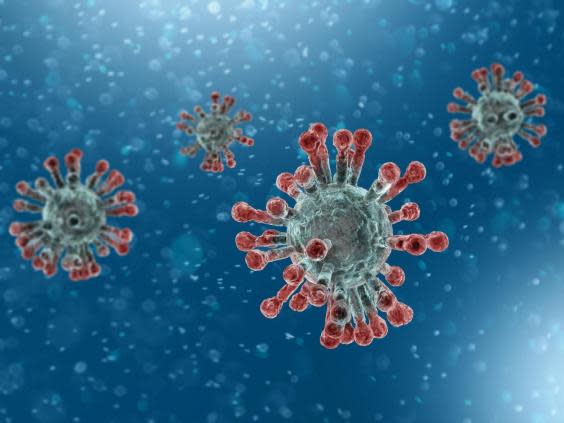Orthocoronavirinae: What does it mean and which other viruses are in the subfamily?

Since coronavirus first emerged in China at the end of 2019, the disease has spread to nearly every country in the world, with almost eight million people known to be infected and more than 400,000 deaths recorded globally.
The origins of the outbreak, which began with a handful of reports in mid-December, are not yet known with some suggesting it originated in a seafood market in the Chinese city of Wuhan, while others argue it may have “started as an accident”, with the virus escaping from a laboratory.
Covid-19 is just one type of coronavirus and belongs to a large family of viruses that are known to cause illnesses ranging from the common cold to more severe diseases. Coronaviruses mostly cause disease in animals, however there are some, including Covid-19, that can infect humans.
Each of the coronaviruses belong to an overarching sub-family – which is a way of categorising viruses with similar traits – called "orthocoronavirinae" and they get their name from their appearance under a microscope.
Coronaviruses are named after the Latin word "corona", meaning “crown” or “halo”, because they are spherical and appear to have crown-like spikes on their surface.
But, what exactly do we know about orthocoronavirinae and how many diseases that belong to it can infect humans?
Here’s a breakdown of what we know about the sub-family.
What is orthocoronavirinae?
Biologists classify organisms hierarchically on the basis of how they are related to one another. The term "orthocoronavirinae" represents a "sub-family" of the coronaviruses and simply denotes things that are rather closely related, explains Professor Mark Pagel, an evolutionary biologist and head of the Evolution Laboratory at the University of Reading,
"In turn, these form part of a larger 'order of viruses' known as the nidovirales and Covid-19 is in this sub-family," Professor Pagel explains.
He adds that all coronaviruses share the characteristic of being RNA viruses, meaning they are made up of small particles of genetic material called ribonucleic acid. They are also surrounded by a "fatty protein coat" and depend on the organisms they infect (hosts) for their very survival.
What other viruses are in the subfamily?
Michael Head, a senior research fellow in global health at the University of Southampton, states that there are hundreds of different kinds of coronaviruses, however only seven are currently known to infect humans.
"There are four types that cause usually mild respiratory symptoms, including the common cold," he explains. "Then there are the three more famous coronaviruses that have caused international outbreaks, these being SARS, MERS, and SARS-CoV-2 (Covid-19).

Professor Pagel adds that this tells us these viruses are evolutionarily closely related and "share a relatively recent common ancestor".
"The common ancestor to Covid-19, SARS and MERS will be far more recent, possibly within the last few thousand years, maybe even more recent," he says. "This recent common ancestry illustrates how rapidly viruses evolve."
How many coronaviruses infect humans?
The National Institute of Allergy and Infectious Diseases (NIAID), states that most coronaviruses circulate among such animals as pigs, camels, bats and cats.
However, seven of those viruses can transfer to humans, which is called a spillover event, and can cause disease.
The European Centre for Disease Prevention and Control (ECDC) states that among the most recent zoonotic – a disease that can be transmitted from animals to people – coronaviruses to have caused human outbreaks are the Severe Acute Respiratory Syndrome (SARS) in 2003 and the Middle East Respiratory Syndrome (MERS) in 2012. Meanwhile, Covid-19 is the latest novel coronavirus, otherwise known as Severe Acute Respiratory Syndrome Coronavirus-2 (SARS-CoV-2).
Professor Pagel states that it is hard to say exactly how many coronaviruses infect humans because not all of them produce symptoms, and humans will not be exposed to all of them.
"At least four are what we call the ‘cold’ viruses and these circulate in humans continually. Another three or so (MERS, SARS and SARS-COV-2 or Covid-19) produce far more severe symptoms," he explains.
"But the wider point of evolutionary relatedness is that all of the coronaviruses will be quite similar genetically. And this is why their existence in other animal species, especially those we eat and/or domesticate, can be a risk to our health, as we are currently seeing with Covid-19. Their genetic closeness means that they can sometimes, simply by acquiring a mutation, obtain the ability to infect us."
What are the main symptoms of Covid-19?
The most common symptoms of Covid-19 are similar to the flu and include a fever, tiredness, and dry cough.
In May, the NHS announced that it was also adding loss or changed sense of smell or taste to its official list of coronavirus symptoms.
People around the world have been experiencing various other symptoms, including “Covid toe” and rashes on other parts of their bodies.
You can read more about the lesser-known symptoms that could be linked to Covid-19 here.
In most people (around 80 per cent) the symptoms come on slowly and remain mild while some patients do not exhibit any at all – otherwise known as asymptomatic.

